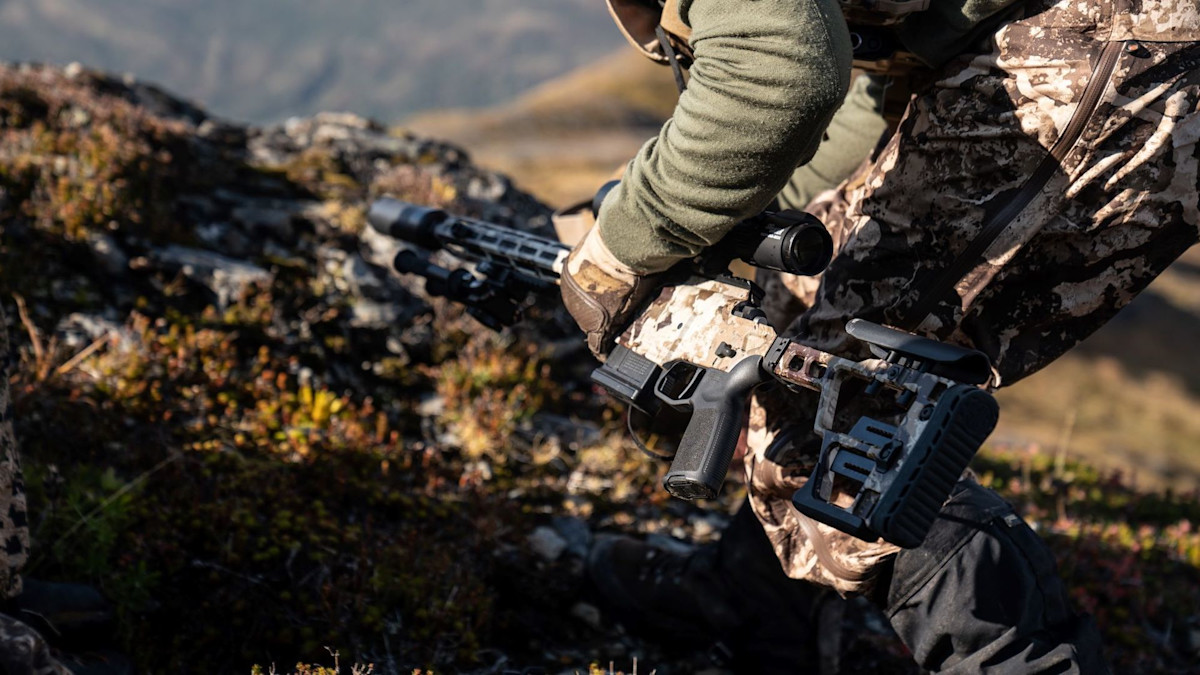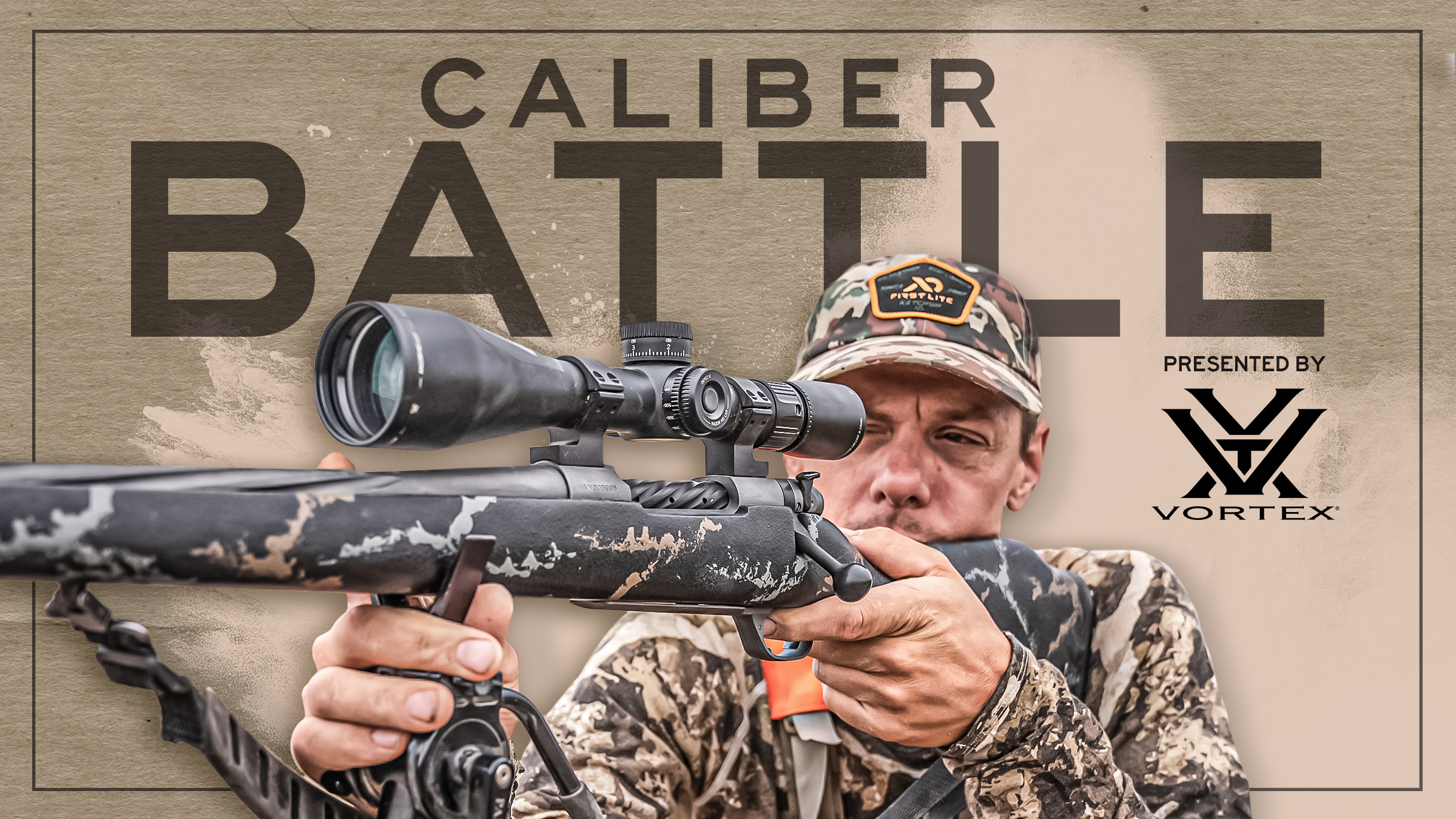
Spend any time in the Wonderful World of Firearms™ and you quickly discover that gun debates are really debates about tradeoffs.
Do you want an ultra-powerful cartridge or one that’s comfortable to shoot? Do you want a lightweight handgun or one that can carry 21 rounds? Do you want a super-accurate rifle or one that won’t cost an arm and a leg?
The .300 Winchester Short Magnum (WSM) promises to settle at least one of those debates by offering magnum power in a short-action package. Its 2.860-inch overall length is just a hair longer than a .308 Winchester, but it delivers bullet energy that rivals the much longer, 3.34-inch .300 Win. Mag.
Dozens of articles have been written comparing the WSM to its larger brother, so we wanted to compare it to a similar but even more legendary cartridge: the .30-06 Springfield.

Ballistics
Both the .300 WSM and the .30-06 Springfield fire .30-caliber bullets in the 110- to 200-grain range, with the majority of the options in the middle 150- to 180-grain category (more on that below). But when comparing bullets of the same weight, the WSM fires them faster.
Federal reports that its Trophy Bonded Tip 165-grain WSM flies 3,130 feet-per-second (fps) at the muzzle, and Hornady’s 165-grain InterLock hits the exact same velocity. Bullets that weigh 130 grains can reach upwards of 3,400 fps, and 180-grain bullets fly at 3,000 fps or a little slower.
The .30-06 Springfield, on the other hand, launches a 165-grain bullet only about 2,900 fps, 200+ fps slower than the WSM. These Elite Hunter Tipped projectiles from Sig Sauer leave the muzzle at 2,950 while these Venari Soft Point bullets exit at 2,900 fps. Bullets that weigh 130 grains can top 3,000 fps, but 180-grain projectiles drop down to 2,700 fps.
Those velocity differences mean the WSM produces more energy downrange, but perhaps more importantly for western hunters, the WSM also offers a flatter trajectory. With a 200-yard zero, the 165-grain .300 WSM projectiles mentioned above will drop about 36 inches at 500 yards. That might sound like a lot, but three feet isn’t a huge drop at that distance for a .30-caliber projectile.
The 165-grain Sig Sauer Venari projectile, on the other hand, drops about 46 inches at 500 yards with a 200-yard zero. The Elite Hunter Tipped does better, but it still drops about three inches more at 500 yards than the WSM.
Velocity, energy, and trajectory aren’t the WSM’s only ballistic advantages. Frank C. Barnes notes in “Cartridges of the World” that the newer cartridge (the WSM came out in 2001) takes advantage of modern cartridge design to promote accuracy.
“For highly efficient and consistent powder burning, the .300 WSM employs a short, fat powder-column geometry, a concept revered by accuracy-obsessed benchrest shooters for nearly three decades,” he explains. The WSM uses more powder, but it burns it more efficiently, which allows it to fire the same .308-diameter bullet faster and more accurately.
Winner: .300 WSM
Shootability
Regular Caliber Battle readers know that hot rod ballistics almost always come at a price, and this time is no different.
The .30-06 is no lightweight in the recoil department. It usually kicks with about 20 foot-pounds of recoil energy. But the WSM has it beat, and in this case, that’s a bad thing. Chuck Hawks reports that the WSM produces between 22 and 27 ft.-lbs. of recoil energy, depending on load and rifle weight. So, while you can find WSM options that feel similar to a .30-06, the WSM will usually hit your shoulder with more force and be less comfortable to shoot.
The .30-06 also tends to be cheaper and more widely available. Any gun shop worth its salt will stock at least a few .30-06 options; you’re less sure to find a box of WSM. Moving into the online space, most of the big dealers we surveyed offered twice as many .30-06 options as WSM.
Price usually follows availability. You can expect to pay about $1.40 per round for the cheapest .30-06 but at least $2 per round for WSM. Quality hunting ammunition is a little more equitable, but you’re still likely to pay a premium for the less common Short Magnum.
Same story for rifle availability. While the WSM is popular enough that most of the big gun makers offer a few models chambered in that cartridge, you’ll have more options with the .30-06. Ruger, for instance, offers five bolt-action rifle models chambered in .30-06 but none in WSM, and Savage offers 16 models in WSM but a whopping 42 models in .30-06. Browning might be the only company that leans more heavily towards WSM (21 models) than the .30-06 (20).
The .30-06 wins this category, but it’s worth noting that the WSM is often more “carryable.” The shorter cartridge allows gun makers to use a shorter action, which usually cuts down on the weight of the rifle. It’s only a few ounces, maybe half a pound, but for high country backpacking trips, it might be worth it.
Winner: .30-06 Springfield
Versatility
The .30-06 is considered one of the most versatile big-game cartridges ever–and for good reason. It can be loaded with bullets as light as 100 grains and as heavy as 220 grains, making it a great do-it-all cartridge for everything from varmints to grizzly bears. What’s more, that range can be achieved in the real world. Midway USA offers .30-06 options between 125 and 220 grains, so even hunters who don’t reload can take advantage of the Springfield’s excellent versatility.
The WSM can take down any North American game animal, but hunters will have more trouble finding lighter, varmint-style bullets. While Hornady’s reloading manual lists a load for its 110-grain V-Max, Midway USA’s lightest .300 WSM offering is 150 grains. (You can find bullets as light as 130 grains if you go down to the .270 WSM, but we’ll stick to the .300 in this Caliber Battle.)
Of course, there’s an argument to be made that if you’re going after a coyote or bobcat, both cartridges offer way more power than you actually need. Whether you’re hitting a coyote with a 125-grain .30-06 or a 150-grain WSM, you’re probably not too concerned about keeping the pelt. But both are going to put the animal down in a hurry, and the WSM might shoot a little flatter.
The Springfield’s greater bullet weight range gives it the nod in this category, but I’d say it’s more of a technical win than a knockout.
Winner: .30-06 Springfield
And the Winner Is…
Like I said at the beginning, this debate is about tradeoffs. If you go with the .30-06, you’re trading top-shelf ballistics for comfort, ammo cost, and rifle availability. If you go with the .300 WSM, you’re trading a tried-and-true cartridge for a modern design that’s more accurate, faster, and harder-hitting. Plus, the WSM’s short-action design gives you a wider selection of rifle options if you’re trying to build a lightweight rig. Neither cartridge is better or worse on a universal level, but one might be better for your specific situation.
With that caveat out of the way, I think I’d recommend the .30-06 to the average would-be hunter. The selection of factory options will allow that person to target virtually any game animal in any scenario while the factory loads for the .300 WSM are mostly tailored to western big game hunting. That’s great if you like going after elk, but it’s probably unnecessarily expensive for whitetail.
Winner: .30-06 Springfield



